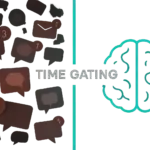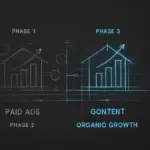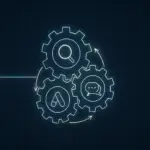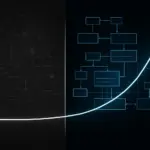For most founders, the statistics are an all-too-familiar reality. Research shows that 72% of entrepreneurs are affected by mental health conditions, with 45% experiencing burnout. We build systems, architect processes, and design scalable business models. Yet, we often fail to construct the most critical system of all: the one that manages our own attention, energy, and information.
For years, my own approach was a patchwork of tools and tactics. I’d read about a new framework, discover a new app, bolt it onto my existing workflow, and hope for the best. The result was more complexity, not less. I was building intricate systems for my companies—from engineering production lines at JvG Technology to marketing automation at Mehrklicks—while my personal operating system ran on chaos.
This isn’t about finding the perfect tool or the ultimate life hack. It’s about applying the same first-principles thinking we use in our businesses to ourselves and designing a personal OS. Here’s a look at the system I’ve been building and refining to manage complexity, not just to get more done, but to maintain clarity and focus across multiple ventures.
Part 1: Why Most Productivity Systems Fail Entrepreneurs
Productivity advice online tends to fall into two camps. On one side are the endless listicles of tools. These can be helpful, but they address the symptom, not the cause. A new task manager won’t fix a broken workflow; it just gives you a prettier view of the chaos.
On the other side are high-level frameworks like Forbes’s TEMPO (Time, Energy, Mindset, Proficiency, Organization). These are conceptually sound but often lack the practical, step-by-step guidance needed to implement them. They tell you what to focus on, but not how to build the underlying structure.
The gap lies between theory and tools. An entrepreneur’s real challenge isn’t a lack of information—in fact, research shows 76% of us feel daily stress from information overload. It’s having a robust system to process it all. A personal system shouldn’t be a rigid set of rules, but an adaptable framework that manages three core resources: information, attention, and energy.
Part 2: A 5-Step Blueprint for Your Personal OS
After years of iteration, I’ve landed on a five-part framework that is the architecture for my personal OS. It’s not about specific apps; it’s about the logic that governs how I operate. The goal is to design a system that surfaces the right information at the right time, protects the space needed for deep work, and creates a reliable feedback loop for course correction.
Step 1: The Bottleneck Audit
Before building anything, you have to map the existing territory. A bottleneck audit is a simple diagnostic process to identify where your current system breaks down. I do this by asking three questions at the end of a chaotic week:
-
Where did information get lost? (e.g., A client email I forgot to answer, a great idea on a napkin that disappeared, a verbal commitment that was never captured.)
-
When did my focus break? (e.g., Constant context switching, notification-driven work, getting pulled into low-value tasks.)
-
Where did my energy leak? (e.g., Decision fatigue from an unsorted inbox, meetings without a clear agenda, redoing work that wasn’t right the first time.)
The answers reveal the weakest points in your system. For me, it was almost always the capture and processing of inputs. That insight became the foundation for the next step.
Step 2: Designing the Information Flow
The core of a personal OS is its ability to manage information. My goal is to get ideas, tasks, and inputs out of my head and into a trusted system as quickly as possible, freeing my mind for thinking, not just for storage. My information flow has three stages:
Capture: Have a universal, frictionless way to capture everything. For me, this is a single inbox where everything goes initially—emails, voice notes, web clippings, scanned documents. The tool doesn’t matter, but the single point of entry is non-negotiable.
Process: Every day, I process this inbox to zero. This doesn’t mean doing all the tasks; it means deciding what each item is and where it belongs. Is it a task for a project? A note for my knowledge base? A meeting for the calendar? Or is it trash?
Retrieve: Information is useless if you can’t find it when you need it. This is where I structure my digital environment. Project-specific materials live in project folders. Broader ideas and learnings go into my personal knowledge management system, which acts as a second brain. This approach is a core part of my process for running experiments, allowing me to connect learnings across different projects over time.
Step 3: The Weekly Review Engine
A system without a feedback loop will inevitably fail. The weekly review is the single most important component of my OS. It’s a 60-minute, non-negotiable appointment with myself every Friday afternoon.
This isn’t just about planning the next week; it’s a strategic review that keeps the system clean and aligned with my priorities. The agenda is simple:
-
Get Clear: Process all remaining inboxes (email, physical, notes) to zero.
-
Get Current: Review the past week’s calendar and accomplishments. What went well? Where were the bottlenecks?
-
Get Creative: Review project lists, waiting-for lists, and long-term goals. Am I making progress on the things that truly matter? This review connects directly to the principles I use for building systems in my businesses, ensuring my personal efforts align with my professional objectives.
This weekly rhythm is the engine that drives adaptation and prevents the system from becoming stale.
Step 4: Managing Energy, Not Just Time
Time is finite, but energy is renewable and manageable. My calendar is not just a list of appointments; it’s a plan for my energy. I design my week around „focus blocks“—large, uninterrupted chunks of time for deep, high-value work.
Maker vs. Manager Schedule: I divide my days. Mornings are typically for „maker“ work (strategy, writing, system design), which requires deep focus. Afternoons are for „manager“ work (meetings, calls, email).
Themed Days: When possible, I theme my days. For example, Mondays might be for JvG Technology strategic planning, while Tuesdays are dedicated to marketing and growth experiments at Mehrklicks. This reduces the cost of context-switching.
Shutdown Ritual: Each day ends with a strict shutdown ritual. I review my task list for the next day, close all tabs, and formally declare the workday over. This prevents work from bleeding into personal time and allows my mind to truly disconnect and recharge.
Step 5: Integrating the Tool Stack (The Final Layer)
Notice that tools are the last step, not the first. The tool stack should serve the system, not define it. Over-reliance on a specific app is fragile; a system built on principles is antifragile.
My stack is intentionally simple and built around the jobs-to-be-done I defined in the previous steps:
For Capture: Anything that can feed a single inbox.
For Processing & Task Management: A robust task manager that can handle projects, contexts, and due dates.
For Knowledge Management: A platform that allows for linking ideas together (a „second brain“).
For Scheduling: A calendar.
The specific apps have changed over the years, but the functions they serve have remained constant. This focus on function over form makes the system adaptable.
Part 3: The System in Action Across Ventures
This framework isn’t theoretical; it’s the load-bearing structure that allows me to operate across different contexts.
At JvG Technology, we deal with long, complex engineering projects. My system needs to manage detailed project plans, technical documents, and long-term timelines. The „Retrieve“ function of my information flow is critical here, ensuring I can pull up schematics or meeting notes from six months ago in seconds.
At Mehrklicks, the pace is completely different. We run weekly marketing sprints and experiments. Here, the „Weekly Review Engine“ is essential. It allows me to assess the results of last week’s tests and rapidly plan the next iteration, ensuring we maintain momentum.
And for my premium saddle brands like Iberosattel, the system manages supplier relationships, product development ideas, and customer feedback. The „Bottleneck Audit“ helps me quickly see if a supply chain issue or a customer service workflow is becoming a drag on my energy and attention.
The same OS handles it all because the principles—Capture, Process, Review, Focus—are universal.
Frequently Asked Questions
How is this different from other productivity systems like Getting Things Done (GTD)?
This framework is heavily influenced by GTD’s principles, especially the capture and process steps. The key difference is the explicit focus on designing the system from first principles and integrating energy management as a core component, not just task management. It treats the system as a personal, evolving OS rather than a static methodology.
This sounds like a lot of work to set up. How long does it take?
The initial setup—choosing your tools and defining your core workflows—can be done in a single weekend. The most important part is the Bottleneck Audit, which only takes an hour of honest reflection. The real power comes from consistently executing the Weekly Review, which is just 60 minutes a week. It’s a small investment for maintaining control and clarity.
What specific tools are in your current stack?
While I emphasize that principles are more important than tools, my current stack includes a combination of Things 3 for task management, Obsidian for personal knowledge management, and Fantastical for my calendar. My email client and a simple notes app serve as my universal inboxes. This stack works for me, but the right tools for you are the ones you’ll actually use consistently.
From System-Builder to Architect
Building a personal OS is the ultimate meta-skill for an entrepreneur. It’s the work that enables all other work. By shifting your focus from chasing productivity hacks to designing a cohesive system, you move from being a frantic operator to a calm architect.
This isn’t a one-time fix. It’s an ongoing process of refinement, observation, and adjustment. But by building a system that manages information, protects your focus, and sustains your energy, you create the foundation for scalable success—not just in your business, but in your life.




